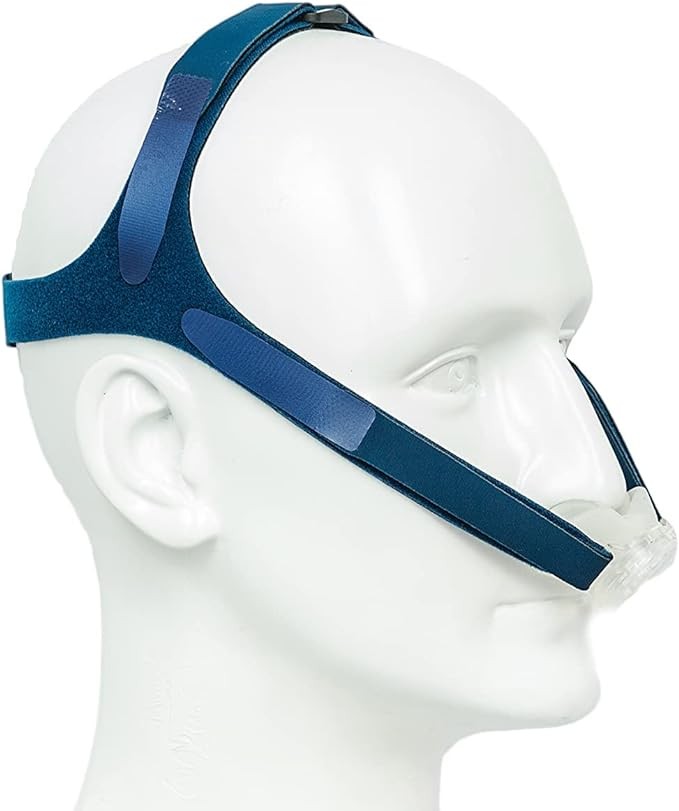Sleep apnea is a common sleep disorder characterized by repeated pauses in breathing during sleep. These pauses, known as apneas, can last for several seconds and occur multiple times throughout the night. Sleep apnea is associated with various health risks, including high blood pressure, heart disease, and stroke. Fortunately, there are innovative treatment options available to manage this condition, and one of the most promising ones is Expiratory Positive Airway Pressure (EPAP).
### Emergence of EPAP
EPAP is a non-invasive treatment that helps individuals with sleep apnea breathe more easily and maintain an open airway during sleep. Unlike Continuous Positive Airway Pressure (CPAP), which involves the use of a machine to deliver a steady stream of air pressure, EPAP utilizes the patient's own breath to create positive airway pressure.
The EPAP device, typically a small adhesive nasal valve, is placed over the nostrils before going to sleep. As the individual exhales, the device creates resistance, increasing the pressure in the airway and preventing it from collapsing. This mechanism helps to keep the airway open, allowing for uninterrupted breathing throughout the night.
One of the key benefits of EPAP is its simplicity and ease of use. Unlike CPAP, which requires a machine and a mask, EPAP devices are small, disposable, and do not require any external power source. This makes EPAP a convenient option for individuals who find CPAP therapy cumbersome or uncomfortable.
EPAP has been shown to be effective in improving sleep apnea symptoms and reducing the number of apneas and hypopneas experienced during sleep. Several clinical studies have demonstrated the efficacy of EPAP in improving daytime sleepiness, oxygen saturation levels, and overall sleep quality.
Additionally, EPAP has been found to be particularly beneficial for individuals with mild to moderate sleep apnea. It can also be used as a complementary therapy for those who are already using CPAP but need additional support to maintain a patent airway.
EPAP is generally safe and well-tolerated, with minimal side effects. Some individuals may experience mild nasal discomfort or dryness, but these symptoms are usually temporary and can be alleviated with saline nasal sprays or humidifiers.
Sleep apnea, a condition marked by interrupted breathing during sleep, has traditionally been managed with various Positive Airway Pressure (PAP) treatments. Among these, Expiratory Positive Airway Pressure (EPAP) has emerged as a promising and user-friendly alternative to the more conventional options. Unlike Continuous Positive Airway Pressure (CPAP) machines, EPAP devices offer a simpler, more portable solution, potentially increasing patient adherence to treatment.
### A Closer Look at EPAP: Functionality and Design
EPAP devices are typically small, disposable valves that fit over the nostrils. Their primary function is to create minimal resistance during inhalation while generating positive pressure upon exhalation. This mechanism assists in keeping the airway open, reducing the likelihood of its collapse, which is a common problem in sleep apnea. The EPAP technology, therefore, offers a dual advantage: effective airway management without the complexity and bulkiness associated with traditional CPAP machines.
### Comparative Analysis: EPAP vs. CPAP and Other PAP Therapies
The cornerstone of sleep apnea treatment has long been the CPAP device, which provides a constant stream of pressurized air to keep the airway open. However, its continuous nature and the need for a power source and machinery make it less appealing to some patients. In contrast, EPAP devices are simplistic in design, enhancing their usability and portability.
Bilevel Positive Airway Pressure (BiPAP) therapy is another prevalent method, differing from CPAP in delivering variable pressures for inhalation and exhalation. However, EPAP's uniqueness lies in its focus on providing positive pressure exclusively during exhalation, a critical phase where airway collapse is most probable. Inspiratory Positive Airway Pressure (IPAP), on the other hand, delivers pressure only during inhalation and is commonly found in more advanced respiratory support systems like ventilators and BiPAP devices.
### Effectiveness and Patient Preferences
Studies indicate that EPAP devices can be as effective as CPAP machines in managing moderate to severe sleep apnea. Their smaller size and ease of use also make them more appealing to patients, potentially improving consistent usage. For individuals with mild to moderate apnea, EPAP devices could be particularly beneficial, providing a balance between efficacy and convenience.
### The Future
As the field of sleep medicine continues to evolve, EPAP represents a step forward in making sleep apnea treatment more accessible and patient-friendly. Its innovative approach in airway management, coupled with the ease of use, positions EPAP as a viable alternative to traditional PAP therapies. With ongoing research and technological advancements, EPAP devices are poised to play a significant role in the future of sleep apnea management, offering effective treatment options tailored to patient needs and lifestyles.

Published on January 15, 2024
Expiratory Positive Airway Pressure (EPAP): An Innovative Treatment for Sleep Apnea
Discover how EPAP can revolutionize the management of sleep apnea.
Share This Article
More Articles You Might Like
Discover More Content
Explore our collection of articles across various topics and categories. From cutting-edge technology insights to wellness wisdom, we curate the best stories to expand your horizons.
Article ID: 348